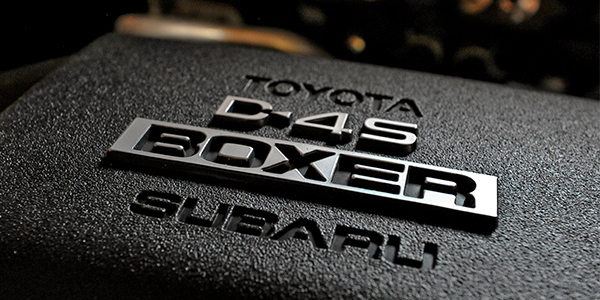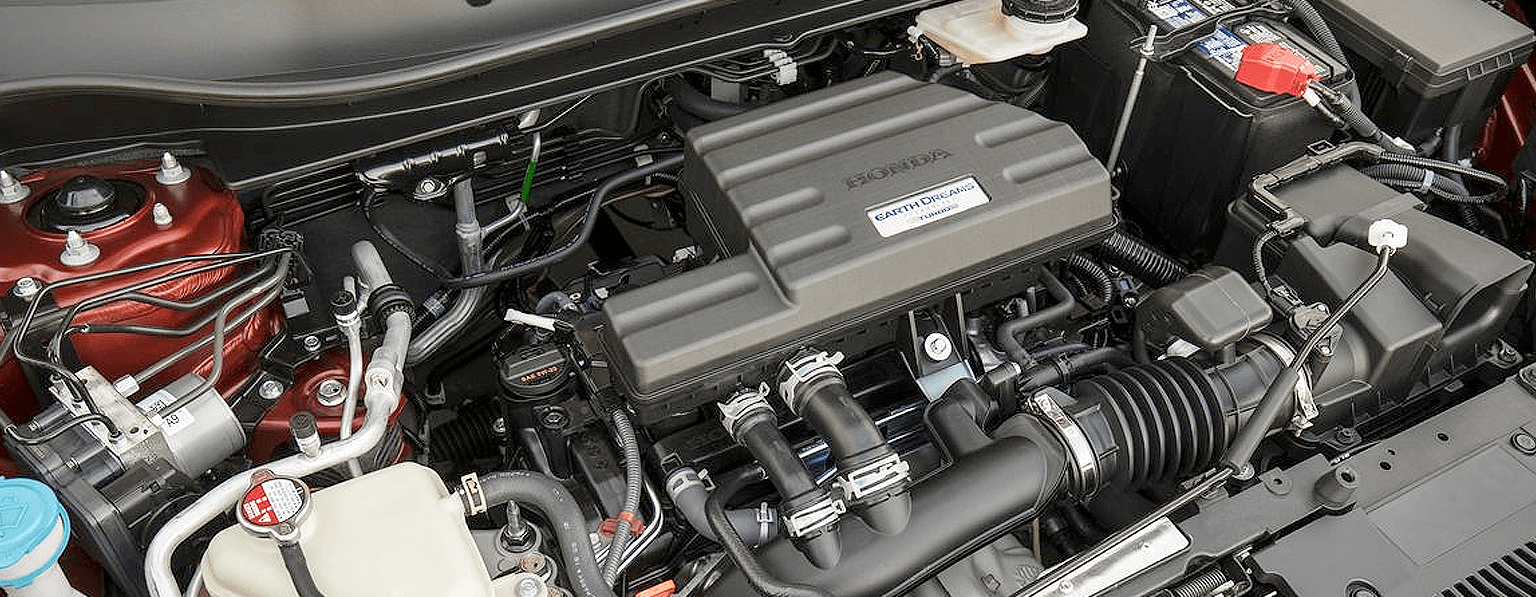Has that helped?Well, Honda's already had problems in cold climates with the 1.5L that led to a recall and reprogram. They were "making oil" to the point of stalling out and leaving people stranded.
You are using an out of date browser. It may not display this or other websites correctly.
You should upgrade or use an alternative browser.
You should upgrade or use an alternative browser.
HPL Premium Plus 0w20, 4000 miles, 2020 Honda Accord 2.0T
- Thread starter harborcat
- Start date
OVERKILL
$100 Site Donor 2021
It reduced it a bit, but didn't solve the problem, which I'm going to assume is a design issue with Honda's DI implementation. Many of its peers don't have this issue, or at least not to the same extent.Has that helped?
Has that helped?
The fix for 1.5t was to update ECM software, it made some improvements, but has not resolved the issue. The Honda 2.0t engine been around since 2018, and if in 5 years there is nothing, I doubt we will ever see a fix, other than class action.
About your point of seeing oil level raising… this is extreme and is not a good way to judge fuel dilution. detecting 5% fuel dilution through dipstick is impossible, remember that some tinny amount of oil simply burns. Mine stayed constant with 5% dilution, and I am annal about setting oil level. For 5qt oil, its only 1/4qt.
Toyota new design combines both port injection and direct injection. These engines see less fuel dilution and also it will keep valves clean from carbon deposit. I am disappointed in Honda, they used to be number one in building engines, not anymore…It reduced it a bit, but didn't solve the problem, which I'm going to assume is a design issue with Honda's DI implementation. Many of its peers don't have this issue, or at least not to the same extent.
OVERKILL
$100 Site Donor 2021
Toyota's system has been dual injection for many, MANY years, like 2008? Ford recently followed suit and has gone the same way. BMW doesn't seem to have dilution issues, despite not having a hybrid dual injection system.Toyota new design combines both port injection and direct injection. These engines see less fuel dilution and also it will keep valves clean from carbon deposit. I am disappointed in Honda, they used to be number one in building engines, not anymore…
Not 2008. Maybe 2015 or so for Camry. My es350 2012 lexus is old style, zero fuel dilution. I dont think I will be buying another Honda. Engine is not the only issue, the quality has been declining everywhereToyota's system has been dual injection for many, MANY years, like 2008? Ford recently followed suit and has gone the same way. BMW doesn't seem to have dilution issues, despite not having a hybrid dual injection system.
Will installing a catch can on the PCV system help to improved this oil dilution problem???
Good question, I have not seen anyone posting UOA for 2.0t with oil catch can, would be good to get some data.Will installing a catch can on the PCV system help to improved this oil dilution problem???
- Joined
- Oct 25, 2021
- Messages
- 1,191
We had this discussion in another thread: https://bobistheoilguy.com/forums/t...l-engine-oil-tests.362880/page-6#post-6323756Not 2008. Maybe 2015 or so for Camry. My es350 2012 lexus is old style, zero fuel dilution. I dont think I will be buying another Honda. Engine is not the only issue, the quality has been declining everywhere
as the dual injection system first debut with the 2GR-FSE engine on the 2005 Lexus IS350
OVERKILL
$100 Site Donor 2021
D-4S started with Lexus vehicles around 2007 or 2008, Toyota branded vehicles got it a bit later, 2012 apparently starting with the FR-S according to this article:Not 2008. Maybe 2015 or so for Camry. My es350 2012 lexus is old style, zero fuel dilution. I dont think I will be buying another Honda. Engine is not the only issue, the quality has been declining everywhere

Toyota D-4S: Port Fuel Or Direct Fuel Injection? Why Not Both? -
Discover Toyota's D-4S engine with both port and direct fuel injection, offering optimal performance, emissions, and fuel economy.
As @IUSER] noted, we previously discussed this and Toyota's first use of dual injection was even earlier.
My normally aspirated 2.4 Honda DI engine also produces about 5% fuel dilution, so it just seems to be a a Honda thing.
But here’s one point of potential confusion (well, to me at least):
Gasoline has many components, each with its own vaporization temperature. As I understand it, some of the less-volatile components are not that different from a lubricant and will never burn off at typical sump temperatures. So once they become part of the engine oil mixture they’ll stay there for the duration.
For me, this leads to two questions:
1) Are these residual “heavy” compounds actually harmful to an engine?
2) While these heavy elements originate in gasoline, do they show up in a typical gas chromotography analysis of fuel dilution?
The absence of general consumer complaints and broken Honda engines suggests this may not the problem we think. Maybe Honda knows what it’s doing?
But here’s one point of potential confusion (well, to me at least):
Gasoline has many components, each with its own vaporization temperature. As I understand it, some of the less-volatile components are not that different from a lubricant and will never burn off at typical sump temperatures. So once they become part of the engine oil mixture they’ll stay there for the duration.
For me, this leads to two questions:
1) Are these residual “heavy” compounds actually harmful to an engine?
2) While these heavy elements originate in gasoline, do they show up in a typical gas chromotography analysis of fuel dilution?
The absence of general consumer complaints and broken Honda engines suggests this may not the problem we think. Maybe Honda knows what it’s doing?
If you have a fuel dilution issue it would also be a good to consider a 0w30. The resulting viscosity loss from dilution will be largely consistent regardless of brand.
That's a lot of dilution for just 4k miles. What's your driving habits? Is it consistent highway miles or frequent stop/go, start/stop, and idle?
I don't think a catch can will do anything for the dilution. Fuel dilution with GDI is mostly due to poor fuel vaporization in the chamber. The fuel gets injected as a finely atomized liquid mist. The fuel is 100% liquid when it enters the chamber. Some of it will flash to vapor rather quickly while the remainder swirls around the cylinder as a liquid. This liquid fuel collects on the cylinder walls, around the top ring land, and thus seeps its way past the rings into the crankcase. This is also why LSPI is such an issue with TGDI engines as the fuel collects between the rings, vaporizes from piston heat, and creates its own little combustion chamber there.
At idle, the slow piston speed and low cylinder pressure means much less turbulence in the chamber. The fuel gets injected into this stagnant low pressure pocket of air and thus is less homogeneous at the time of ignition. The result is much less efficient combustion with more liquid (unvaporized) fuel remaining. This is why LSPI is a low speed event, as the name implies. At higher rpm / piston speed, there's sufficient chamber turbulence to better homogenize the mixture thus reducing this issue.
With port injection, you have the fuel spraying at the back side of an 800°F (or higher) intake valve which helps vaporize the fuel before it enters the chamber. (as well as cooling and cleaning the valve) The fuel is 75% or better vaporized before it even enters the cylinder, reducing the amount of liquid fuel available to wash the cylinder walls.
I don't think a catch can will do anything for the dilution. Fuel dilution with GDI is mostly due to poor fuel vaporization in the chamber. The fuel gets injected as a finely atomized liquid mist. The fuel is 100% liquid when it enters the chamber. Some of it will flash to vapor rather quickly while the remainder swirls around the cylinder as a liquid. This liquid fuel collects on the cylinder walls, around the top ring land, and thus seeps its way past the rings into the crankcase. This is also why LSPI is such an issue with TGDI engines as the fuel collects between the rings, vaporizes from piston heat, and creates its own little combustion chamber there.
At idle, the slow piston speed and low cylinder pressure means much less turbulence in the chamber. The fuel gets injected into this stagnant low pressure pocket of air and thus is less homogeneous at the time of ignition. The result is much less efficient combustion with more liquid (unvaporized) fuel remaining. This is why LSPI is a low speed event, as the name implies. At higher rpm / piston speed, there's sufficient chamber turbulence to better homogenize the mixture thus reducing this issue.
With port injection, you have the fuel spraying at the back side of an 800°F (or higher) intake valve which helps vaporize the fuel before it enters the chamber. (as well as cooling and cleaning the valve) The fuel is 75% or better vaporized before it even enters the cylinder, reducing the amount of liquid fuel available to wash the cylinder walls.
My mostly highway driving ended up with 4-5% fuel dilution. I even tried doing oil change after 1hr drive. If you do short trips, I would imagine the number would be much higher than 5% which labs dont even measure. They say >5%,What's your driving habits? Is it consistent highway miles or frequent stop/go, start/stop, and idle?
It wasn't a recall, it was a service campaign for only cold climate vehicles. It was an update that reduced the likelihood of misfires under certain operating conditions. possibly due to a rich condition.Well, Honda's already had problems in cold climates with the 1.5L that led to a recall and reprogram. They were "making oil" to the point of stalling out and leaving people stranded.
This level of fuel dilution is normal for Honda 1.5/2.0T's and for numerous GDI engines across a variety of brands.
This level of fuel dilution is normal for Honda 1.5/2.0T's and for numerous GDI engines across a variety of brands
What does “normal” mean? Just because its high on all GDI cars does not make it normal. And somehow toyota figured out how to keep it dilution lower than Honda.
harborcat
Thread starter
- Joined
- Nov 30, 2022
- Messages
- 11
These were my first UOAs. As others are posting, this engine has known dilution issues and mine is probably worse because it is tuned.No worries!
Had you done previous UOAs prior to the last two?
If so, what was the fuel dilution for those UOAs?
It is an expected level of dilution on these vehicles. If you look at other UOA's from GDI engines, a high level of fuel dilution is common.What does “normal” mean? Just because its high on all GDI cars does not make it normal. And somehow toyota figured out how to keep it dilution lower than Honda.
The Toyota setup is different since it is dual-injection. The direct and port injectors are used at different times depending on the operating conditions. Not really an apples to apples comparison.
OVERKILL
$100 Site Donor 2021
It was a recall in China:It wasn't a recall, it was a service campaign for only cold climate vehicles. It was an update that reduced the likelihood of misfires under certain operating conditions. possibly due to a rich condition.

Honda 1.5L Engine Suffers Cold-Weather Oil-Dilution Problem
Honda’s direct-injected 1.5L turbo 4-cyl. Earth Dreams engine is creating a nightmare for the company as it tries to resolve a severe gasoline oil-dilution problem it says is caused by cold-weather operation.

Honda 1.5L Turbo Oil Dilution Problems Lawsuit (MY2018-2021) - MyCarVoice
Honda oil dilution problems with 2019-2021 CR-V, Civic and 2018-2021 Accord vehicles with the Earth Dreams 1.5L turbo engine.
 mycarvoice.com
mycarvoice.com
While it's true that many DI designs dilute (and there are many that don't, or not to this level) Honda's issues appear to be more significant than other marques with the level of dilution actually resulting in stalling engines and disabled vehicles:This level of fuel dilution is normal for Honda 1.5/2.0T's and for numerous GDI engines across a variety of brands.

Honda CR-V Affected by Engine Troubles
Honda CR-V engine troubles have been signaled by owners who have complained of gas mixing with oil in 2017 and 2018 Honda CR-V turbo engines.
www.consumerreports.org
Similar threads
- Replies
- 31
- Views
- 3K
- Replies
- 29
- Views
- 2K
- Replies
- 26
- Views
- 2K
- Replies
- 11
- Views
- 1K
- Replies
- 14
- Views
- 2K
